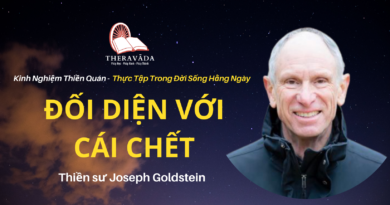A DISCOURSE ON THE ABODE OF THE NOBLE ONES – SATIPA.T.THAANA METHOD
A DISCOURSE ON THE ABODE OF THE NOBLE ONES – SATIPA.T.THAANA METHOD
Hence the importance of mindfulness in the spiritual training of the yogi on the Ariyan path. Practice in mindfulness should begin at the time when the yogi is still a worlding. The practice of contemplating all psycho-physical phenomena that arise from six senses is Satipa.t.thaana (the four applications of attentiveness) Satipa.t.thaana means full awareness of all physical and mental events that occur. It can be easily practised too. We teach this method simply as did the Lord Buddha.
“Gacchanto vaa gacchaamiti pajaanaati.
“Know that you are walking when walking.”
This is the simple instruction of the Buddha in the Satipa.t.thaana sutta. It does not present any difficulty and say that one should know the fact of walking after analysing the inner corporeality, consciousness and so forth. The instruction is so simple that everyone can follow it in his meditation.
Some people insist that the yogi should avoid saying, “I walk” mentally as it implies some sort of ego belief.
There are three different views of the ego or self. The first is the belief in self as the soul-entity. The second is the view of self based on conceit and pride, while the third is the self as a conventional term for the first person singular as distinct from other persons. The self or “I” implicit in the Paa.li word “gacchami” has nothing to do with illusion or conceit. It is a term of common usage that is to be found in the sayings of the Buddha and Arahats.
So we instruct the yogis to make a note of all phenomena in conventional terms, that is, for example, to note “walking” whenever they start walking. But as concentration develops, all these conventional usages disappear and there remains only the reality of everything arising-and-passing away ceaselessly.









